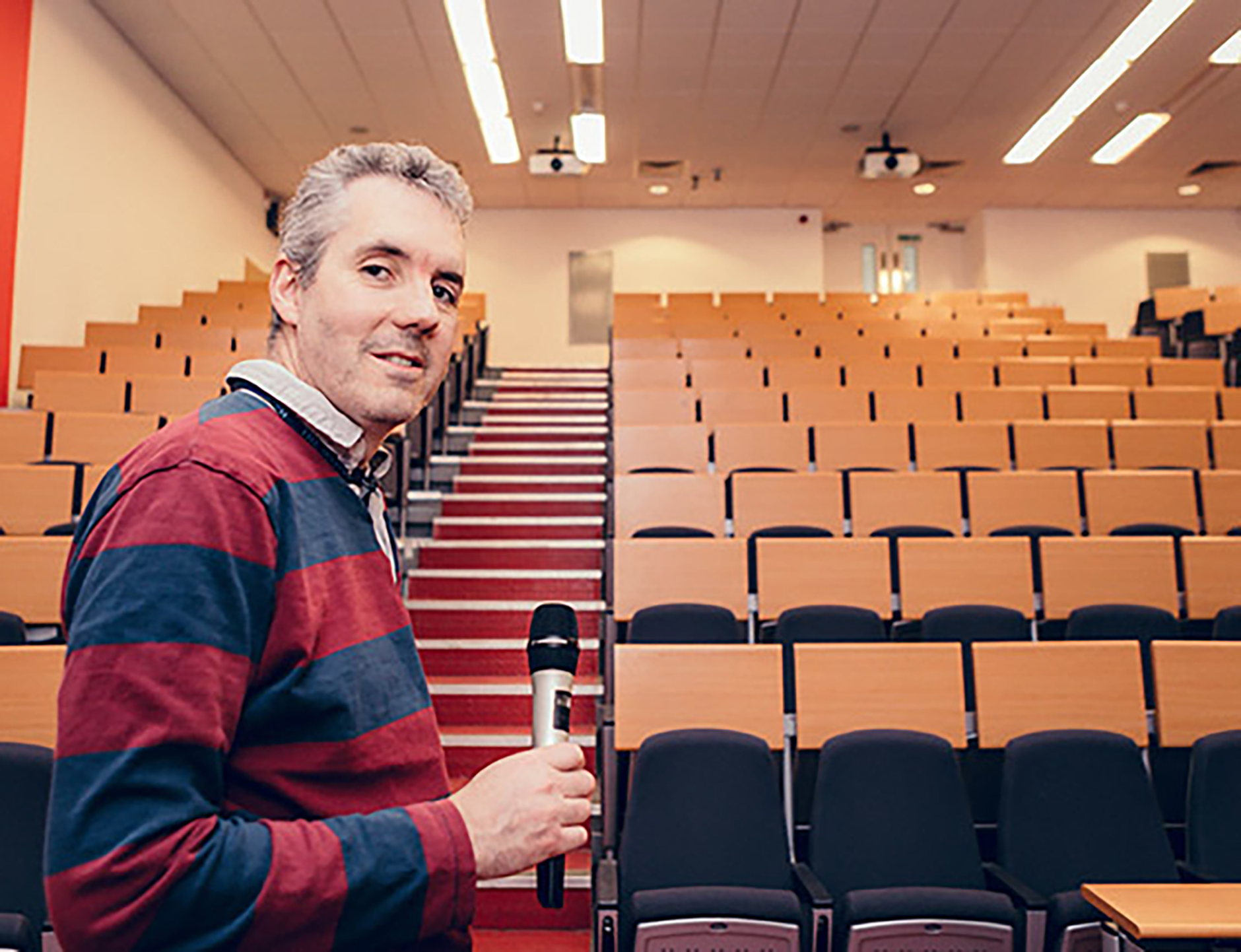The digital way around frequency traffic jams
The client
The University of Edinburgh, founded in 1582, is one of the leading seats of learning in the UK with 30000 Students and a staff of 13000.
The challenge
The University of Edinburgh were experience signal drop and interference issues while using wireless microphones across the campus in over 320 rooms including a 400 seat theatre.
The solution
The University replaced their existing wireless microphones with Sennheiser SpeechLine Digital Wireless microphones across the campus. The 'Multi Room' feature and automatic frequency detection ensures an interference free operation and robustness that the University was looking for. The digital way around frequency traffic jams
“The product fulfils its product promise, the investment is worthwhile, the digital frequency transmission and the automatic search for free frequencies in the 1.9 GHz frequency band (DECT) works well. - "No frequency problems at all."
The University of Edinburgh is currently replacing its analogue Sennheiser microphones with Sennheiser's latest SpeechLine Digital Wireless microphone series. These Dedicated-to-Speech products are to be installed in 320 rooms. Stephen Dishon, the university's AV officer, took this step because SpeechLine Digital Wireless products can solve several of his problems at a stroke: they get around frequency traffic jams, avoid interference with other microphones and the batteries last longer. Last but not least, Stephen Dishon thinks the robust design of the German-made digital microphones will be useful in the tough, everyday life at the University.
Stephen Dishon is very much engaged. The University of Edinburgh development team supervisor is an active member of the AV community in Great Britain, a regular at industry meetings and conferences, and well known for his level of interest. The University of Edinburgh has a solid AV budget because the university is well aware that modern AV technology can help enhance learning successes. Dishons team is known as being front runners, quick to respond to market developments and willing to try out new technologies - all reasons why the University of Edinburgh is an AV technology leader in Great Britain.
This commitment is actually necessary because more than 30,000 students and a staff of 13,000 make the University in Scotland's capital a leading seat of learning in the British Isles. For many years now, around 200 Sennheiser Evolution G3 microphones, 2000 series and 5000 series microphones have been doing sterling service in 200 rooms and lecture theatres. "They have been working reliably for more than 12 years and we never had to exchange any," says Stephen Dishon. Nonetheless, he is in the middle of a generation change. By early 2017, 40 microphones from the SpeechLine Digital Wireless product line had already been deployed, by autumn 2017 it will be about 100 microphone links.
Lecture recording becomes a standard
There are a number of reasons for changing the voice reinforcement technology used in Edinburgh: lecture recording is to be a university standard by the end of 2017. In the future, every single lecture will be digitally recorded. This raises the demand for microphones: 320 learning and teaching spaces - from smaller 5-person rooms to 400-seat theatres - need to be equipped with audio technology. Stephen Dishon quickly realised that this was simply not possible using the existing systems and traditional UHF frequencies. Although additional frequency licences aren't expensive in Scotland, the increased traffic levels on the UHF bandwidths - also because of additional hearing amplification equipment in the halls – further exacerbate the situation. "We saw the risk of traffic jams." Another factor is that rooms are often very close to one another, regularly causing microphone systems from several rooms to interfere with each other.
Mr. Dishon briefly considered connecting new microphones to the existing AV systems using 2.4 GHz frequency range. But this was quickly dropped when he again saw the risk of frequency traffic jams. Dishon: "Wi-Fi transmitting on 2,4 GHz in a university with thousands of devices did not seem to be the best idea. “Following a presentation of the new 1,9 GHz SpeechLine Digital Wireless solution to half a dozen university representatives, the team supervisor quickly realised that this product series could solve a number of the University's AV challenges. Mr. Dishon ordered 10 channels that same day. His decision was based on three main criteria. Automatic Interference Management ensures that the microphones automatically seek a non-interfering channel. The transmitter's Automatic Gain Control also helps prevent interference and supports battery life. Dishon: "The signal only travels as far as it needs to go. “










